There are two major types of wheat planted in the United States – winter wheat and spring wheat. Winter wheat is planted in September and harvested the following summer. Spring wheat is planted in April or May and is harvested in August or
September. Winter wheat is planted in early fall, and the young crop is allowed to overwinter. In spring, the established crop grows quickly, taking advantage of early spring rains, and is ready to harvest by July. In the US, winter wheat growing areas are dominantly in the central Great Plains and the midwest; father north (in the Dakotas and Canada) the winters are too severe for winter wheat to survive the long, cold season.
Before 1900, Michigan was the nation’s largest producer of winter wheat, but an increase in the amount of wheat grown in states farther west, declining soil fertility, and competition from the prairie provinces of Canada caused Michigan to drop in rank.
Of the several varieties of winter wheat, Michigan farmers typically grow soft white and red winter wheat, which is used primarily for cereals and soft biscuits.
Source: Photograph by Randy Schaetzl, Professor of Geography - Michigan State University
Michigan's winter wheat crop is usually about 20-30 million bushels. Huron, Sanilac,
Tuscola, Lenawee, and Saginaw are the top five wheat producing counties.
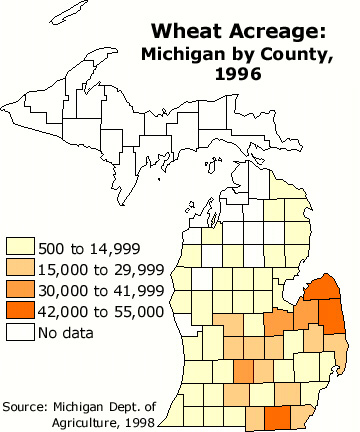
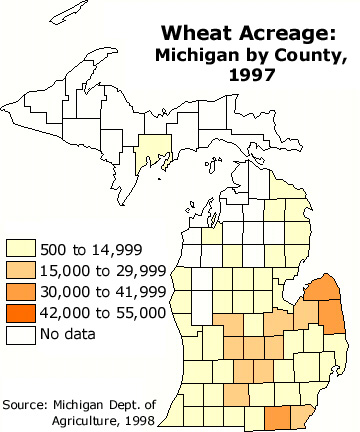
Much of Michigan's wheat is grown on the flat or gently-rolling ground moraines, as this one in Ingham County shows.
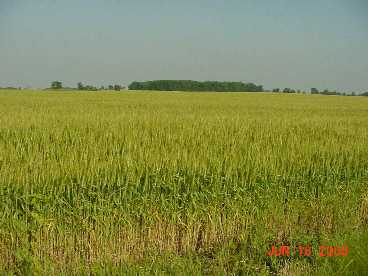
Click here for full size image (235 kb)
Source: Photograph by Randy Schaetzl, Professor of Geography - Michigan State University
An average yield of 40-50 bushels per acre and a price of $3.00 (or more) per bushel make wheat growing fairly profitable. As the maps below illustrate, wheat yields are highly variable from year-to-year, depending on moisture conditions primarily. Thus, there is a certain amount of risk involved in wheat that other crops may not have.
The wheat grown in Michigan is of the winter wheat kind, that is, it is planted in
fall, overwinters as immature plants, and ripens in early summer. The image below
shows winter wheat in a field in October.
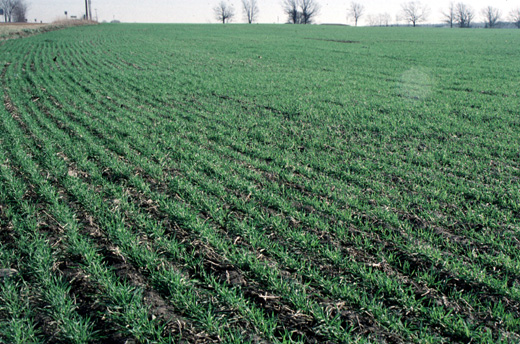
Source: Photograph by Randy Schaetzl, Professor of Geography - Michigan
State University
By June, the wheat is "headed out", as seen below. It is harvested in
July.
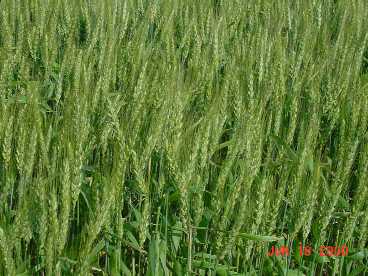
Click here for full size image (274 kb)
Source: Photograph by Randy Schaetzl, Professor of Geography - Michigan
State University
Nationally, winter wheat is grown mostly in the central Plains, where summers are hot and
dry and would otherwise scorch small grains. By growing winter wheat here, the
plants can utilize winter snows and rain in spring, and thus grow rapidly in spring.
Similarly, in the dry Palouse region of Washington state, winter wheat is grown
extensively and benefits greatly from winter rains and snow.
Harvesting and use
The wheat must be dry before it can be harvested. A machine called a combine is used to
cut, separate and clean the grain with one pass through the wheat field. The producer
takes the grain to the nearby elevator where it is stored until needed for food
processing. Wheat is ground into flour at a mill. Most wheat products like bread, rolls,
cookies, pastries and bagels are made from wheat flour. Bran from wheat is added to
breakfast cereals for nutritious fiber. Other products made from wheat include spaghetti,
muffins, crackers, tortillas and macaroni. Wheat products have carbohydrates, protein,
minerals and vitamins
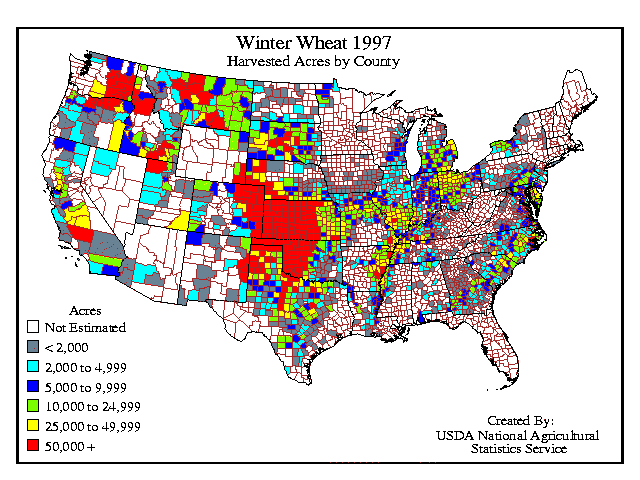 .
.
This material has been compiled for educational use only, and may not be reproduced without permission. One copy may be printed for personal use. Please contact Randall Schaetzl (soils@msu.edu) for more information or permissions.